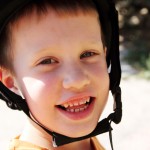
Learning disability is defined as reduced intellectual ability leading to challenges with everyday tasks and situations and affects people throughout life. It has been estimated that in England alone 8% of children aged 7-15 have additional education need associated with, intellectual developmental, communication sensory of physical impairments. Typically, those with learning difficulties have poorer health outcomes however for oral health the evidence from recent reviews is conflicting.
The aim of this review was to compare caries experience and dental care in children with and without learning disabilities using DMFT/ dmft, care index (CI), and restorative index (RI) values.
Methods
The Medline/PubMed, Scopus and Web of Science databases were searched for observational studies comparing caries experience and dental care in children with and without learning disabilities. Two reviewers screened and selected studies independently with risk of bias being assessed using the Newcastle-Ottawa Scale. Meta-analyses were carried out where possible using a random effects model.
Results
- 25 cross-sectional studies involving a total of 3976 children were included.
- The studies came from 18 different countries
- 19 studies focused on one disability with or without associated impairments
- 11 studies considered Down syndrome and 8 Autism; the remainder involved children with non-specific learning disabilities.
- The studies were at medium to high risk of bias.
- A summary of caries experience for children with learning disabilities (CLD) and children with no learning disabilities (CNLD) in shown in table below
| CLD | CNLD | |
| mean DMFT – | ||
| Overall | 2.31 (sd ±1.97) | 2.51(sd ±2.14) |
| Down syndrome | 1.87 (sd ±1.08) | 2.49 (sd ± 1.42) |
| Autism | 1.10 (sd ±0.69) | 1.01 (sd ±0.70) |
| mean dmft/deft | ||
| Overall | 2.24 | 2.48 |
| Down syndrome | 2.31 (sd ±0.43) | 1.86 (sd ±0.97) |
| Autism | 2.42 (sd ±1.90) | 2.27 (sd ±1.73) |
- Meta-analysis of caries experience as shown in the table.
| No. of Studies | Standardised mean difference (95%CI) | |
| DMFT | ||
| Overall CLD v CNLD | 16 | -0.43(-0.91 to 0.05) |
| Down Syndrome v CNLD | 8 | -0.73 (-1.28 to - 0.18) |
| Autism v CNLD | 6 | -0.28 (-1.31 to 0.75) |
| dmft/deft | ||
| Overall CLD v CNLD | 8 | 0.41 (-0.14 to 0.96) |
| Down Syndrome v CNLD | 3 | 0.55 (- 0.40 to 1.52) |
| Autism v CNLD | 4 | 0.43 (-0.53 to 2.39) |
- Meta-analysis was not possible for the Care Index (CI or Restorative index (RI)
- In 5 out of 8 studies in permanent teeth the CI for CLD was less than or equal to CNLD
- The RI was available for 9 studies and was less than or equal to CNLD for CLD in 4 studies.
Conclusions
The authors concluded: –
Overall, there was no evidence that children with learning disabilities have different levels of dental caries in their permanent or primary dentition, to children without learning disabilities.
When the types of disabilities were separated out, there was evidence of lower levels of dental caries in children with Down syndrome in the permanent dentition, however, this could be linked to delayed tooth eruption. There was no evidence of a difference for children with autism or mixed learning disabilities.
There is some evidence of a difference in the amount and type of dental care provided for CLD based on quantitative (using the care and restorative indices) and narrative data, but this is sparse and this area should be strengthened by better reporting of datasets.
Comments
This review has undertaken a detailed unrestricted search for relevant papers and followed a good methodological approach. All of the studies were of cross-sectional design and a broad range of countries was represented. Two main groups of children with CLD were represented, those with Down syndrome and Autism. The authors highlight a lack of clear exclusion criteria but indicate they felt that there was reasonable overall matching between control and study population. Although it is likely that the findings relate to those children who currently access services so may not represent the dental health status of the broader population of CLD. The author looked for information on care and restorative indices to provide some indication of care provision for CLD finding little quantitative data. The available data did suggest a more extractions than restorations which supported by narrative information from other included studies, but more data is needed. The review found that many more studies had been reported in the past decade than in the previous 3 decades which is to be welcomed but future primary studies need to improve the quality of design and reporting.
Links
Primary Paper
Robertson MD, Schwendicke F, de Araujo MP, Radford JR, Harris JC, McGregor S, Innes NPT. Dental caries experience, care index and restorative index in children with learning disabilities and children without learning disabilities; a systematic review and meta-analysis. BMC Oral Health. 2019 Jul 15;19(1):146. doi:10.1186/s12903-019-0795-4. PubMed PMID: 31307444.
Other references
Dental Elf – 3rd Nov 2017
Children and adolescents with intellectual disabilities: oral health status
Dental Elf – 3rd Jun 2018
Oral hygiene programmes for people with intellectual disabilities
